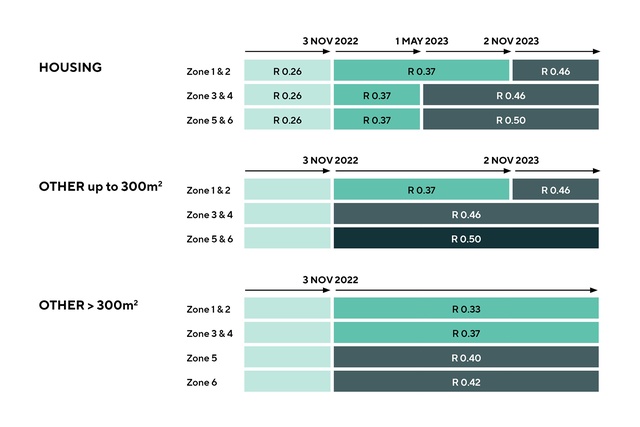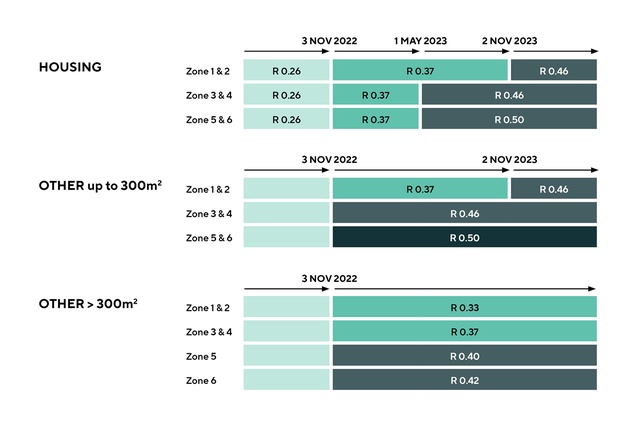New requirements for glass start now
As New Zealand's glass industry prepares for the phasing-in of new thermal performance requirements starting 3rd November, the Window & Glass Association of New Zealand provides a summary of changes.
Clause H1 of the New Zealand Building Code, which regulates the energy efficiency of buildings, was updated in November last year and the first phase of implementation begins on Thursday 3rd of November.
This will see initial increases in thermal resistance or R value requirements for roofs, walls, floors, and windows and doors in effect for any buildings submitted for consent from this date. Further increases follow on 1 May 2023 and again on 2 November 2023.
“Any building consents lodged from this Thursday, 3 November 2022, will need to satisfy the first phase of these new requirements,” notes WGANZ Chief Executive Brett Francis.
“And while the increases in R value requirements for windows and doors will vary depending on a building’s type and location, for many, the initial increases will require a change in glazing solutions.”
Mr Francis says that three key things are needed to determine the new requirements a building is subject to: the building type — being housing, other buildings up to 300m2 or other buildings greater than 300m2, the site address of the building to determine which of six new Climate Zones it’s in, and when the consent application will be submitted.
For housing, the first phase of implementation is a move to R0.37 for windows and doors in houses planned for all areas of the country between 3 November 2022 and 31 April 2023.
Thermally broken aluminium, uPVC and Timber frames with double-glazed Low E IGUs will also meet or exceed the standard.
A doubling in thermal performance ahead of two more phase-in periods will see further increases in requirements that will result in an overall near doubling of thermal performance for windows and doors in New Zealand homes, making them much more energy efficient.

In Zones 1 and 2, encompassing Auckland where 70 percent of the country’s residential construction occurs, there are no further changes for housing until 2 November 2023, when requirements lift to R0.46 and demand different window frame solutions.
In cooler regions, that move comes earlier, in 1 May 2023, moving to R0.46 in Zones 3 and 4, and R0.50 in Zones 5 and 6.
“At these levels, the cold aluminium frames that are a mainstay in so many New Zealand homes will become a thing of this past. Instead, compliance will require double-glazed Low E IGUs combined with thermally broken aluminium, uPVC or timber frames.”
A note on other buildings:
- Most of the changes in the commercial sector – including for the likes of hotels, schools, restaurants, retirement villages and more, are implemented in this first phase.
- For such buildings up to 300m2, Zones 1 and 2 move to R0.37, and will be the only segment to shift again on May 1 2023 to R0.46. Zones 3 and 4 will sit at R0.46, and Zones 5 and 6 at R0.50.
- For buildings greater than 300m2, Zones 1 and 2 will move to R0.33, Zones 3 and 4 to R0.37, and Zones 5 and 6 split into R0.40 and R0.42 respectively.
WGANZ have created a simple tool for housing requirements in the H1 Info Hub on the Association’s website, and have Quick Reference Guides for all the building types available also.
More resources and regular updates are available from the Window & Glass Association of New Zealand’s H1 Info Hub.











